AnnaTakigahara Nature School
Recommend Tour01
AnnaTakigahara Nature School
Recommend Tour01
A trip to Echizen City for people of various backgrounds to experience the city's cultural environment.This time, we will travel to Echizen from the perspective of a foreigner who loves the Japanese Cultural environment, accompanied by Anna, who came from Denmark five years ago to study Japan and now runs the “Takigahara Shizen Gakko” (Takigahara Nature School) at Takigahara Farm, where she studies agricultural life.
Denmark is one of the world's leading countries in education.Anna's father is the principal of “Fo. Lukehøjskole,” a popular lifelong learning school in Denmark, and she herself has studied at “Chaos Pilot,” a business school that is gaining worldwide attention as a next-generation educational institution, and is active in the field of education, especially in nutrition education.Fukui is the root of food education.It is the birthplace of Sagen Ishizuka, who popularized nutrition education.This trip was a tour of Echizen from her point of view.
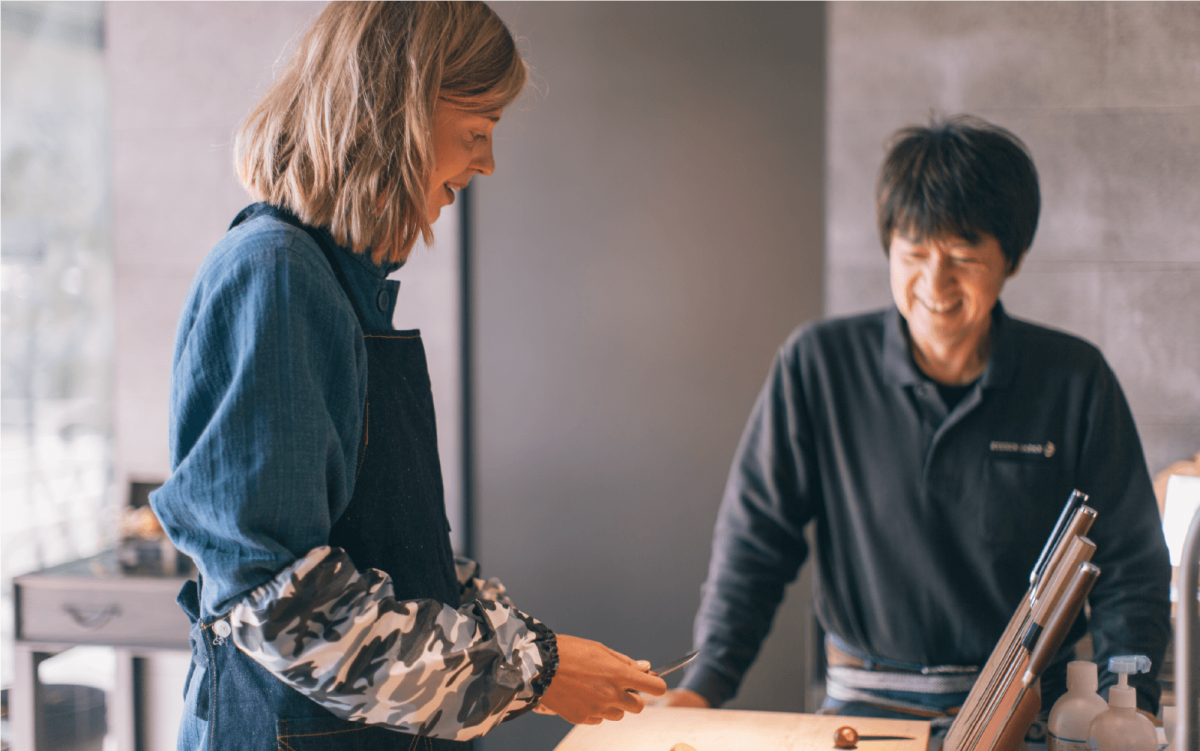
The first place we visited was Ryusen Knives.This time, we will experience knife making.Anna grew up in a culture of making her own tools, using knives made by her father since childhood.We will also enjoy making knives this time.The gallery, where you can try out all the products, is great, but the hands-on workshop is also a very satisfying experience, allowing you to work with skill like a professional.The finished kitchen knives are literally made to last a lifetime. You can feel the attachment to the tool that you cannot get by buying it.
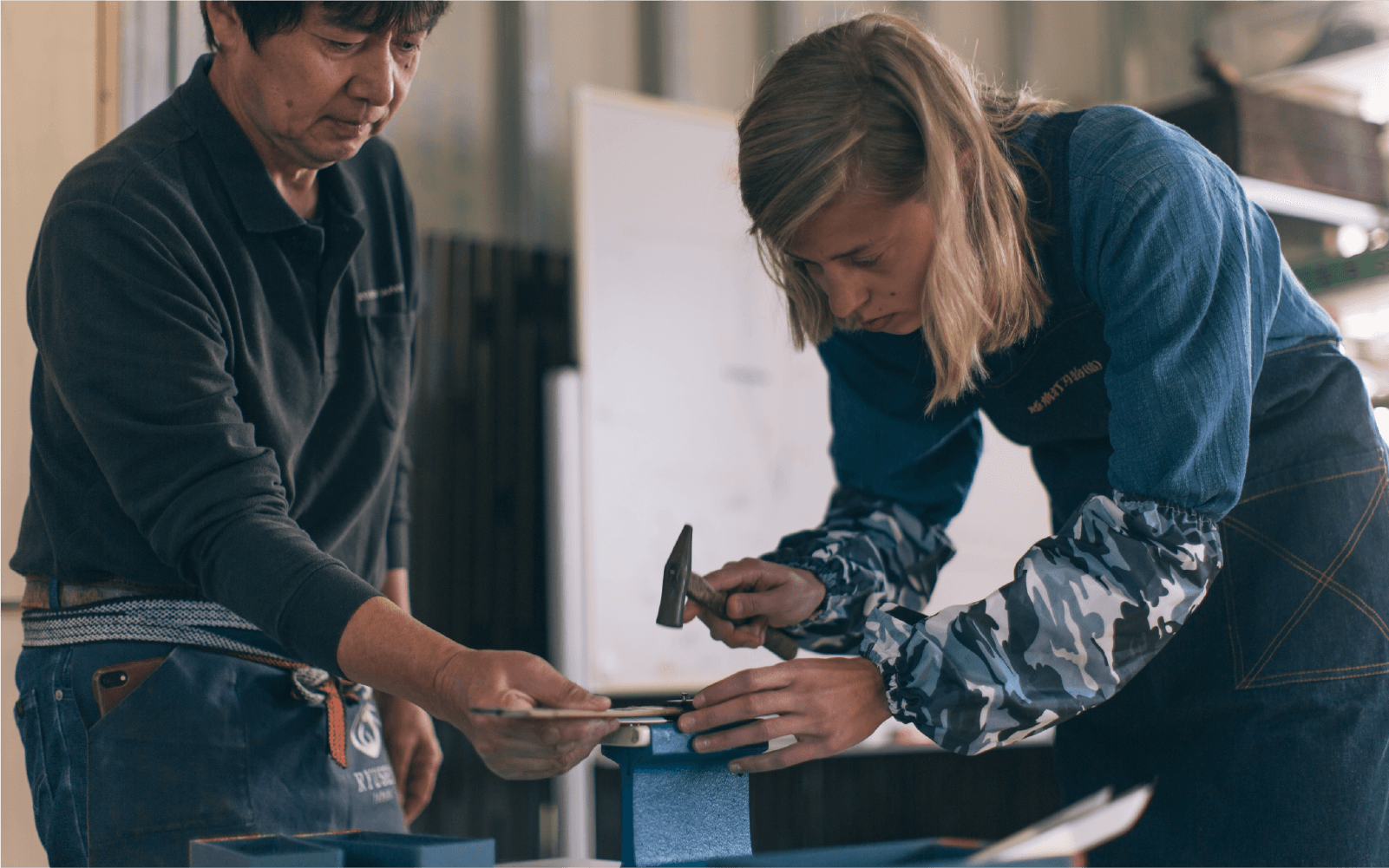

The next shop we visited was Furnitureaholic, a company that learned the techniques of Echizen tansu and mainly sells made-to-order furniture.The view of Omushi-cho, where the workshop is located, is so spectacular that after enjoying the scenery for a while, Ana enjoys sunbathing during the little bit of waiting time she has left.It's after lunch, so you need time to loosen up a bit. Being with Ana makes me think about the pace of life.
Here you can experience a workshop to make your own original chopsticks.This workshop was conceived as a way to use scrap wood from the production process in a good way, instead of throwing it into the garbage.Anna engages in social activities through her own experiences, including a year of schooling in Denmark and living solely on waste food from supermarkets. Since she lives her life with as little environmental impact as possible, she usually carries her own chopsticks. The opportunity to make her own chopsticks from scrap wood is perfect for her.

Mr. Yamaguchi, the representative of the company, begins by talking about the care of tools.Caring for tools is more important than anything else.Furniture craftsmen use a variety of tools, but the most important is the planer.While sharpening the blade of the kanna, I was impressed by the story of how a well-maintained tool combined with the superior skills of a craftsman can make the product itself last for a long time.We choose handmade items because we want to use our favorite items as long and carefully as possible.
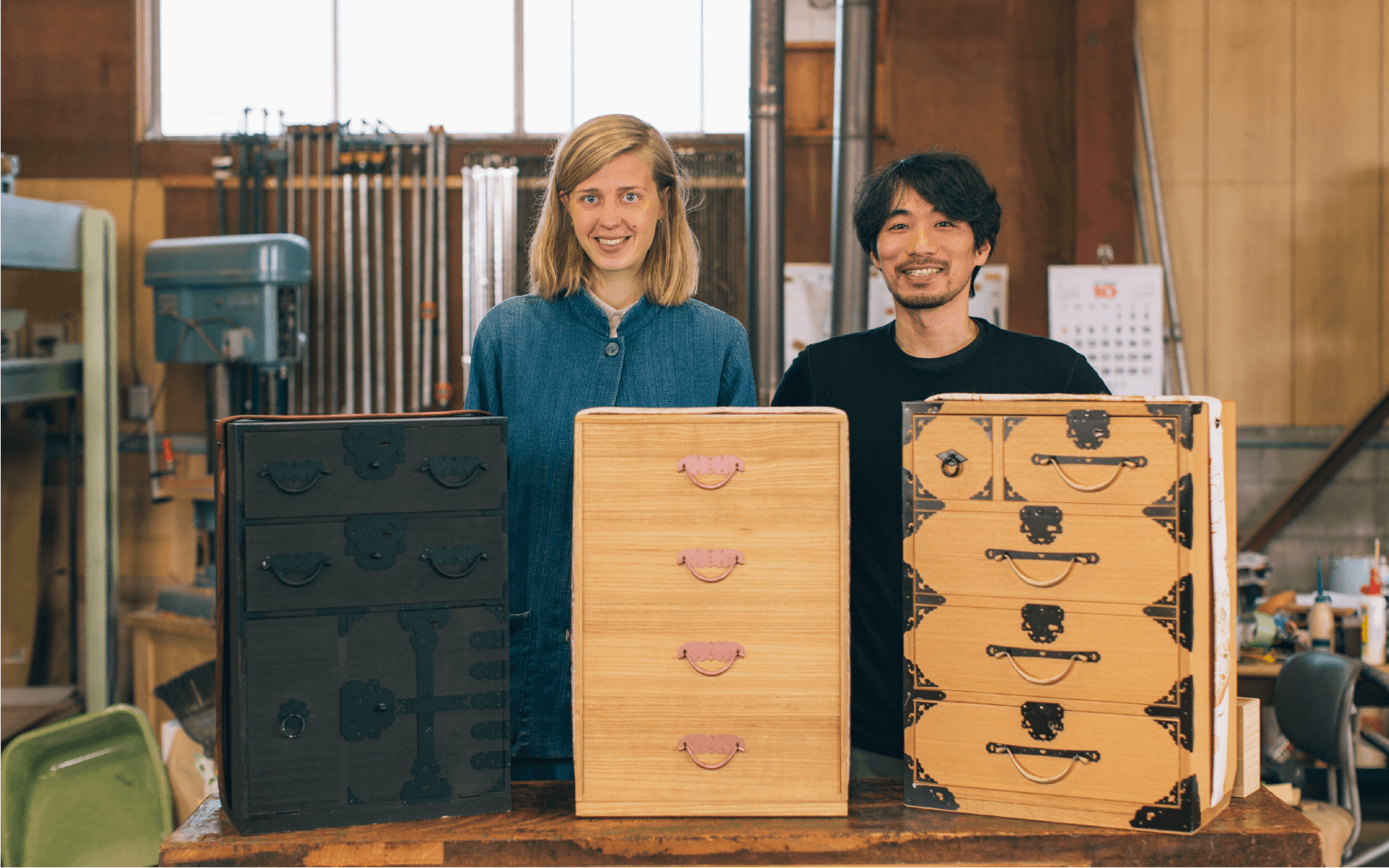
Over the Echizen chest-shaped carry case that inspired him to become a Fukui Brand Ambassador, the participants talked about the future of craftsmanship and manufacturing.
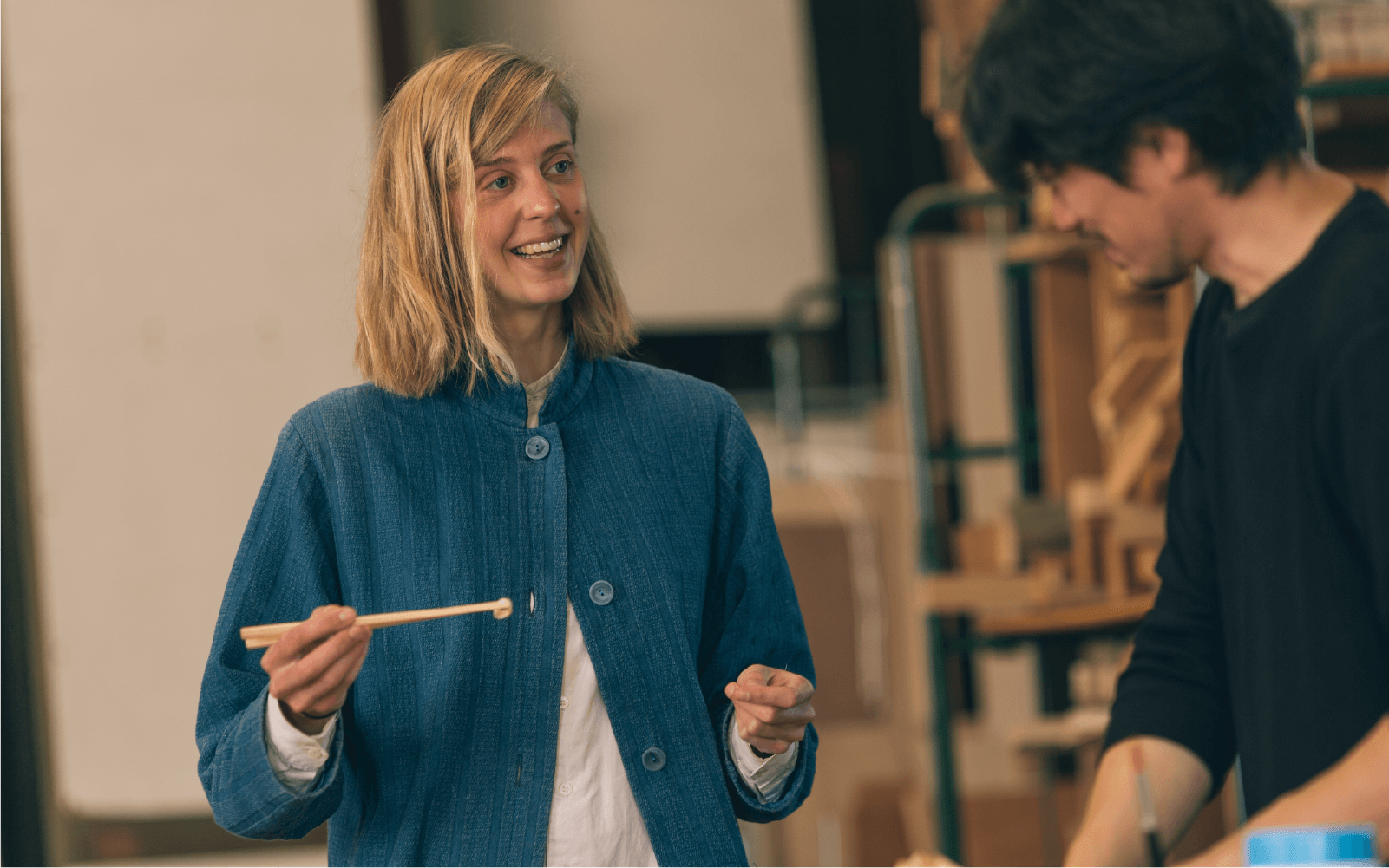
Using a jig developed by Mr. Yamaguchi that can be used by first-time users of the planer to cleanly cut the work, each piece is sharpened one by one while observing its condition.With the teacher's support, Ana was able to make satisfactory chopsticks.You can't help but smile as you pick up the shavings.
After making chopsticks, the next stop was the Imadate-Goka area, a sacred place for washi paper.
On the way to Okamo Otaki Shrine, I visited a store I have always been curious about, “Ryozo Yanase Paper Mills.”
The door opens to reveal a wide array of products made from washi paper.The products on display include not only Yanase's own items, but also those of nearby competitors.
Yanase Ryozo Paper Mills specializes in a type of transparent thin paper called kozo-shi, which is used for wrapping paper and matting paper for Japanese sweets.Washi is characterized by its beautiful patterns, and since two sheets of washi are handmade and laminated together, three women work in close coordination in the workshop to produce washi one after another.
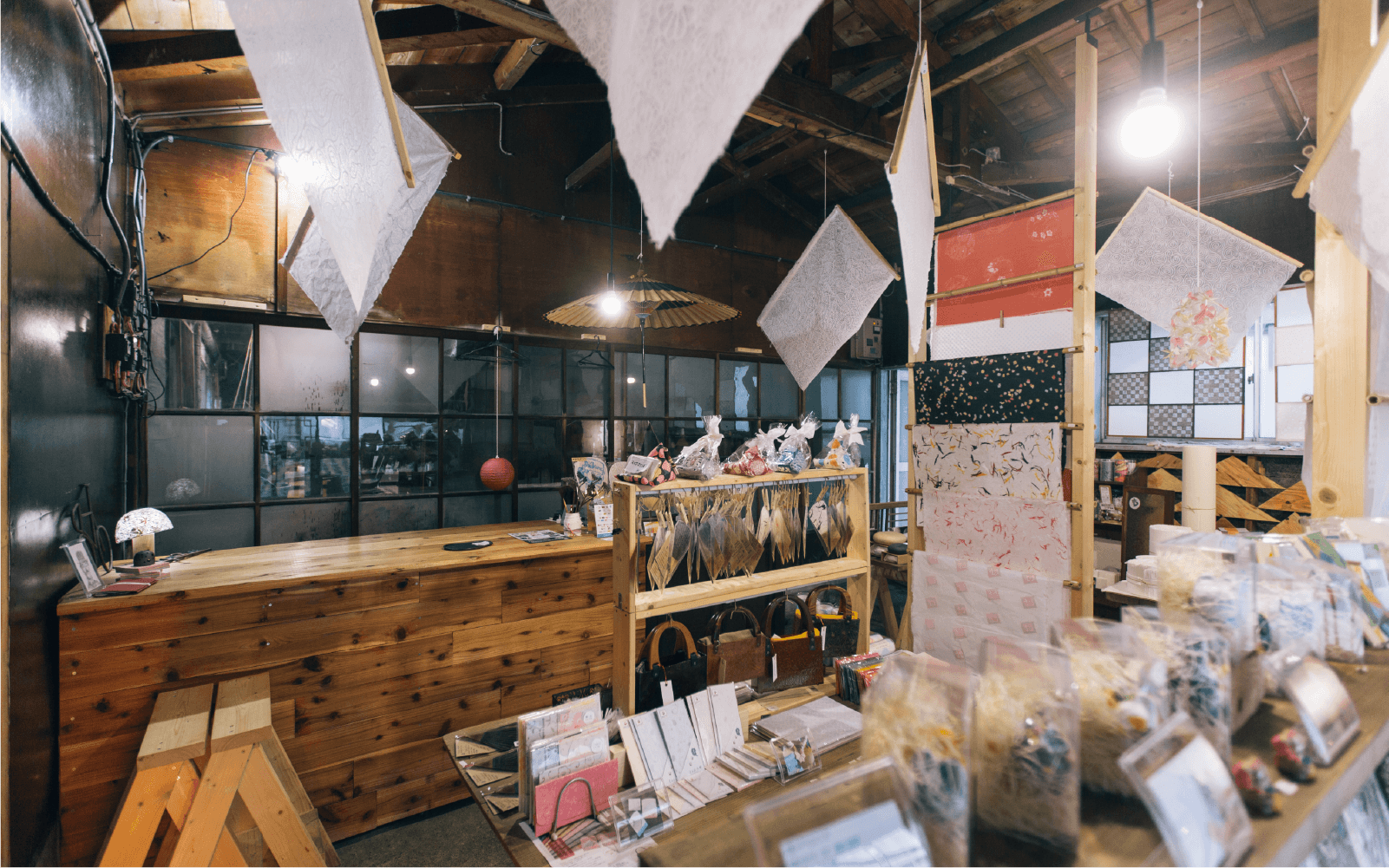
The environment is based on a division of labor, with men in charge of preparing raw materials and women in charge of papermaking.It is one of the characteristics of Echizen washi that most of the traditional papermaking craftsmen are women.When I see this kind of environment, I think I can nod my head in agreement with the story of the goddess of papermaking passed down in Okamo Otaki Shrine.
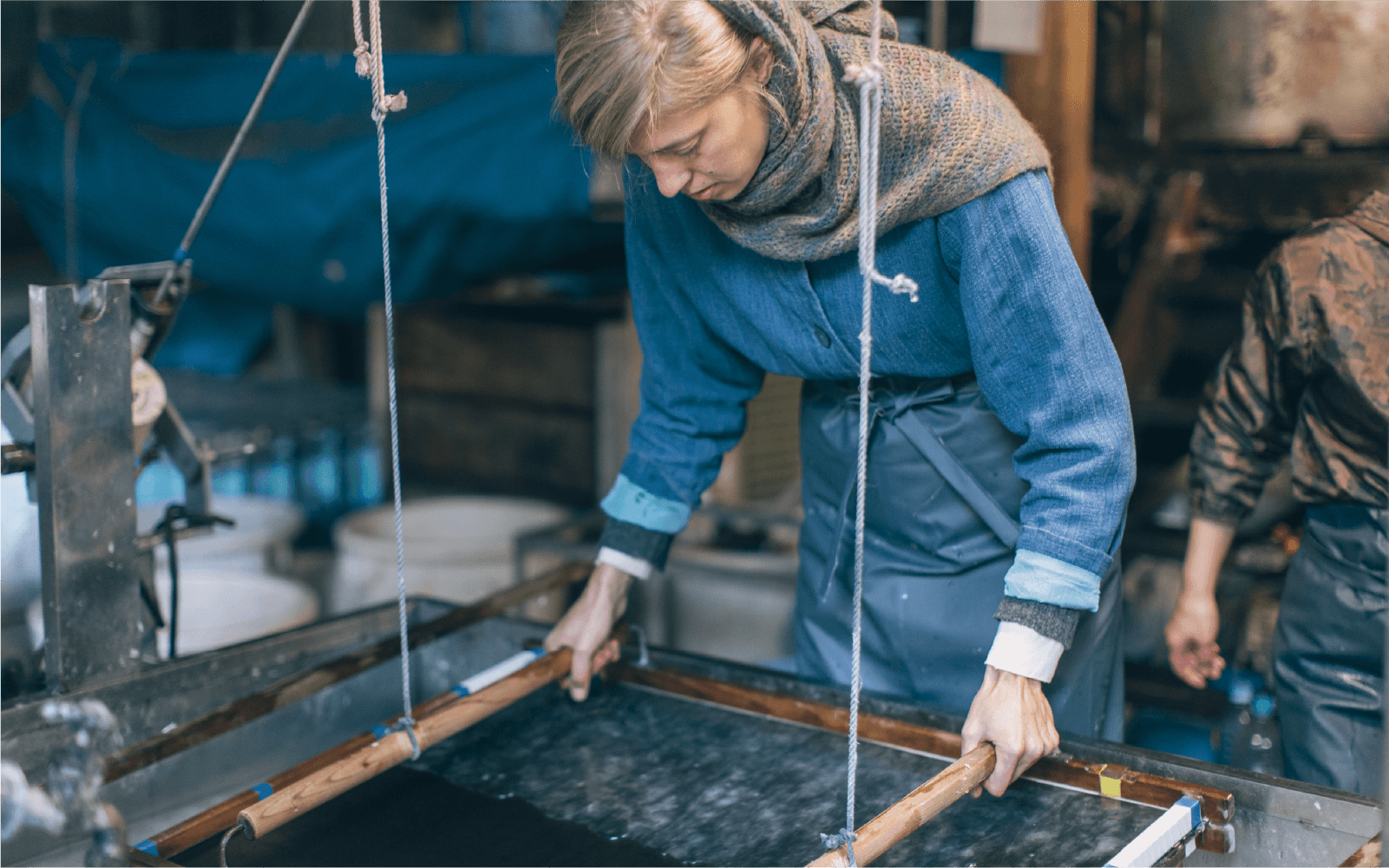
Joining the women, Ana will also be taught papermaking.The challenge was to use a traditional Echizen washi technique called kanagata rakusui-shi, in which a metal mold is placed on the paper and a pattern is applied to the paper, and the pattern is then copied onto the material by the force of the shower-like water droplets.
As expected, it did not go well the first time, but after several attempts, I got the hang of it and was able to make washi with a beautiful spiral pattern.It is indeed a professional site.The environment is complete with a drying process that can be completed as quickly as it started.
This workshop also offers a paper-making experience using this environment several times a year through craft tourism and other programs, and we hope you will take advantage of this opportunity to visit.
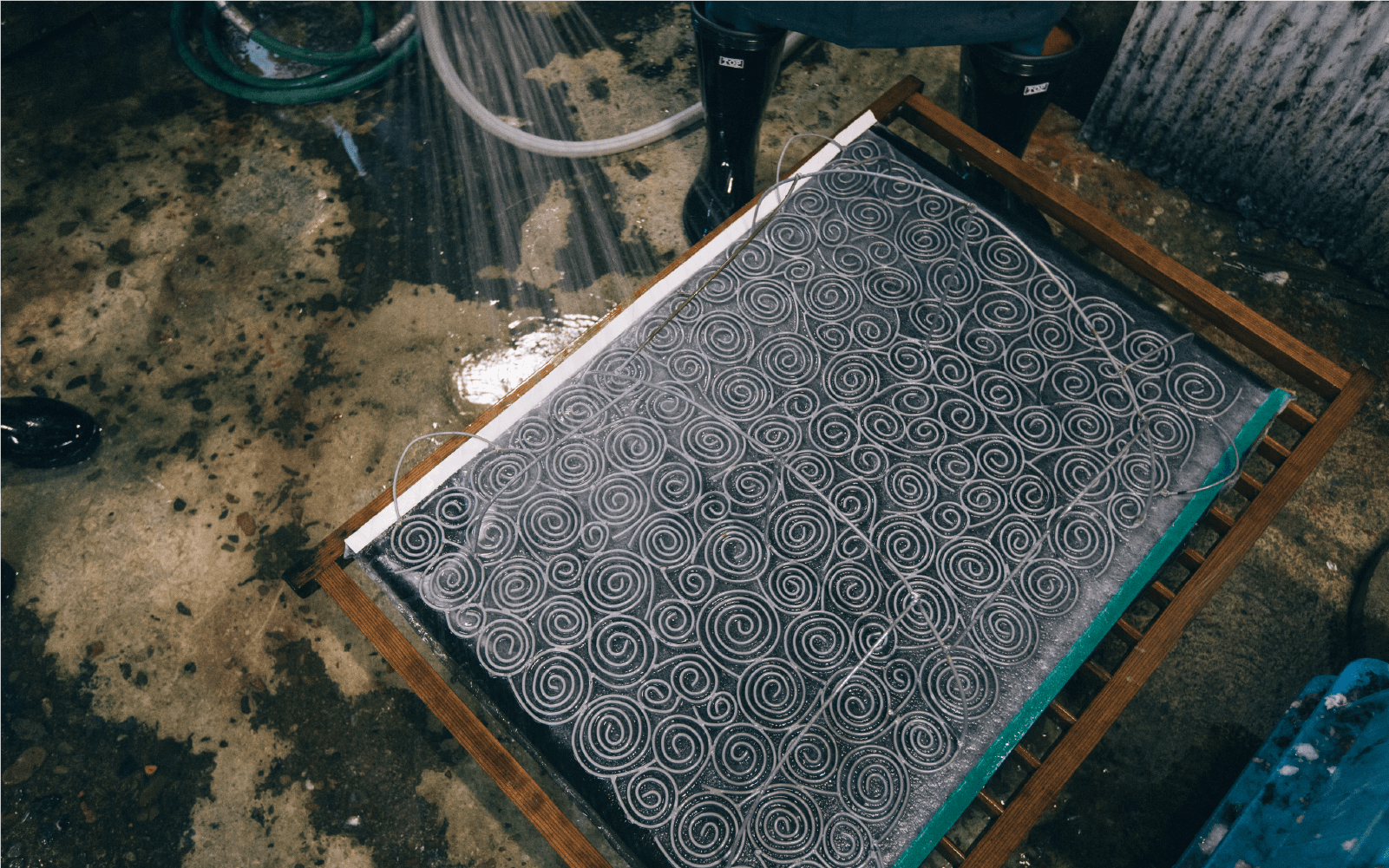
Accompanied by Anna, who has successfully completed her papermaking, we will visit Okamo Otaki Shrine.
Perhaps it is the environment suitable for papermaking, but the slightly humid air enhances the sacred impression.Ana, strolling slowly through the temple grounds as if soaking up the negative ions, also seemed to feel the power of the land.
With Anna, we finally reached our last stop on our journey around Echizen City, the “Yamafutokoro Kobo”.I was feeling good and tired after a full day of touring Echizen City.And I'm getting hungry.
As a lodging facility that claims to be a farmer's guest house, one's heart swells with anticipation for the delicious food that is surely awaiting them.
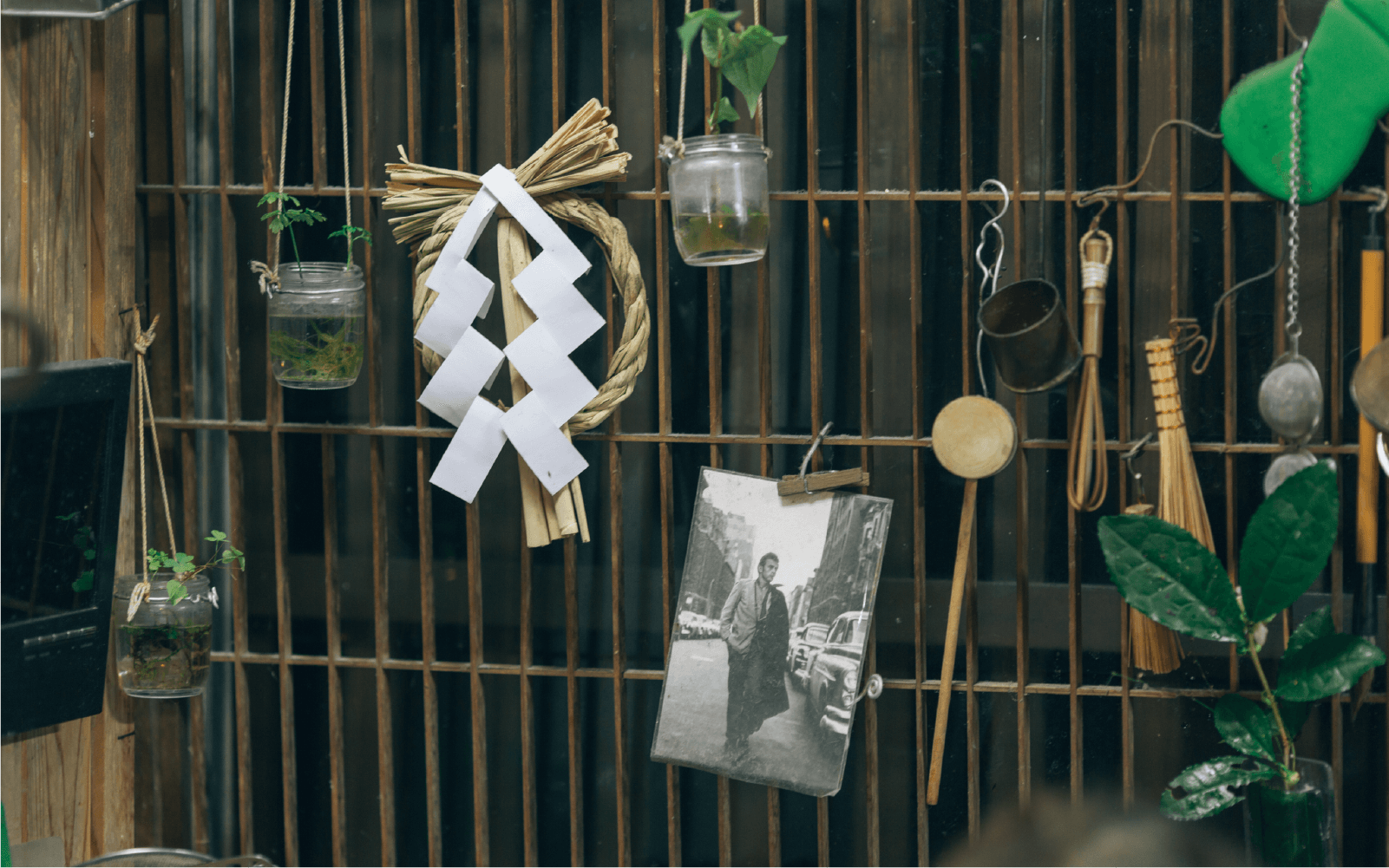
The “Yamafukoro Kobo” is located in an area deep in the mountains of Echizen City.
The workshop is run by two people: Chitose Yamaguchi, a craft artist, and Professor Sakakibara, a scientist.
Renovated from a house in the innermost part of the valley, the inn offers a variety of experiences that reflect the couple's personalities to the fullest, including local cuisine using ingredients typical of a farmhouse guest house, indigo dyeing, miso making, and more.In addition to lodging, the restaurant can be used just for lunch or dinner, and visitors can easily enjoy local cuisine using ingredients from the Echizen area.
When we arrived at the workshop, we were warmly welcomed by Ms.Chitose.Handed to me was a handmade chanchanko(padded sleeveless kimono jacket).
The gentle comfort and warm reassuring feeling of being wrapped in a comforter immediately relaxes you, and you feel completely at home in the cozy space, as if you have returned to your grandmother's house.
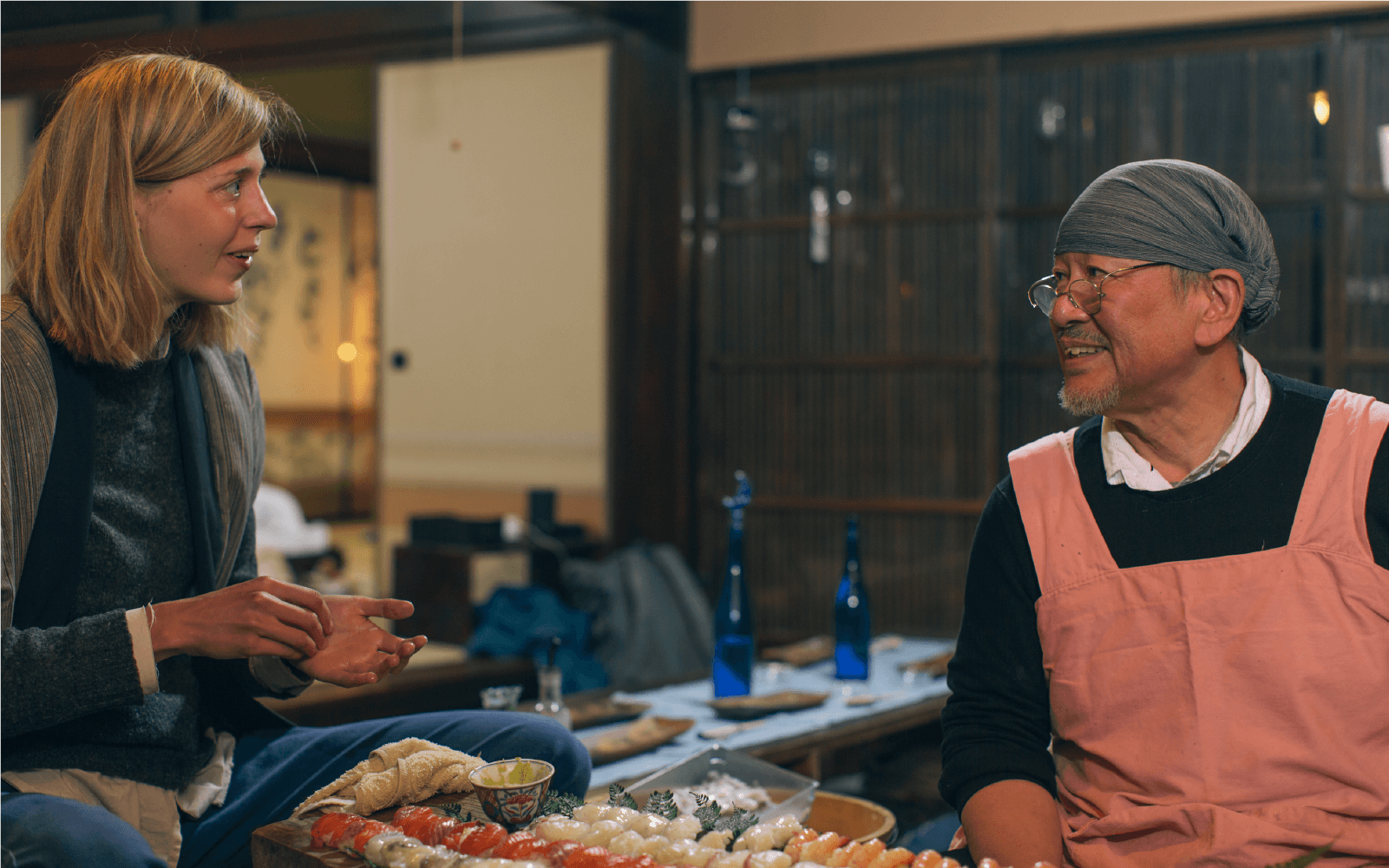
We heard many stories, but I couldn't take my eyes off the sushi that Professor Sakakibara was making in front of me.
I am amazed at the volume of the food, which is normal every time, the quality of the ingredients, such as “Fukui Salmon,” a trout salmon raised in seawater, and seasonal bluefin squid from the Echizen coast, is surprisingly high, and the chefs’s skill like professionals is second to none.
The presentation of the meal, which is typical of Ms.Chitose, a craftsman, is as impressive as the craftwork throughout the workshop.
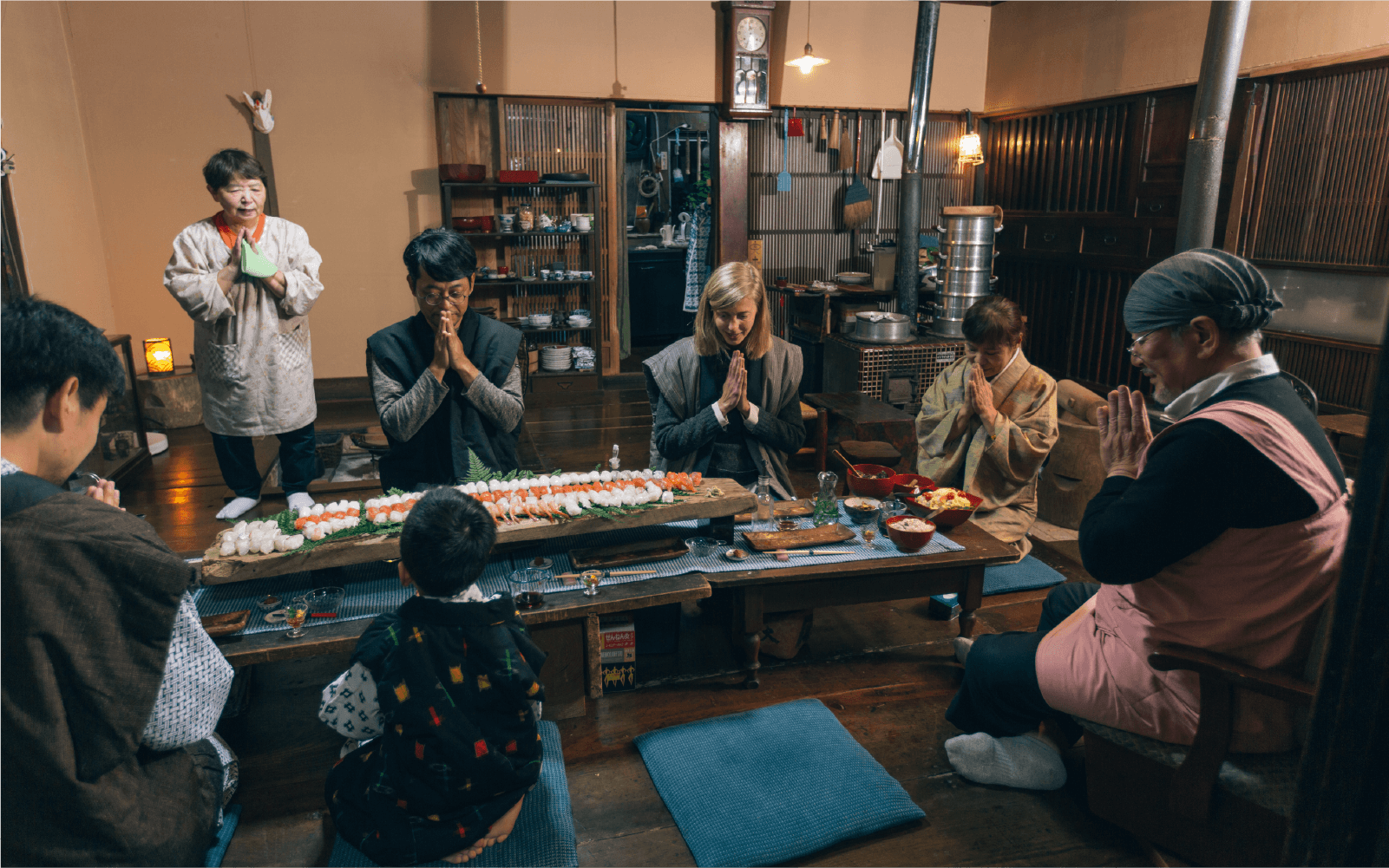
The best use of this place is to talk slowly with someone, so I've invited an interesting chatterbox to join us, who was introduced to Mr. Katoh, a Arborist who fell in love with the land and moved here.Jugoshi are generally called arborists, and if lumberjacks make their living by selling cut trees, arborists make their living primarily by cutting trees.
What was even more surprising was that he had been a diver specializing in salvage before he became a lumberjack, so there was no one more intellectually stimulating to talk to.In addition, he is fluent in English and was able to have a deep conversation with Ana.
Mr. and Mrs. Kuritani, who chose this place to stay for their first trip together with their five-year-old son, joined us and enjoyed talking over delicious food and drinks.
Ms.Chitose is also active in the “Hashiwa Bunka Kenkyukai,” which aims to pass on chopsticks and Japanese culture to children to help build a caring society.Before the meal, the meaning of “Itadakimasu” and “Gochisososama” are discussed, and everyone present prays in thanksgiving before eating the meal.After dinner, you will be taught how to use chopsticks and get a more memorable lodging experience.
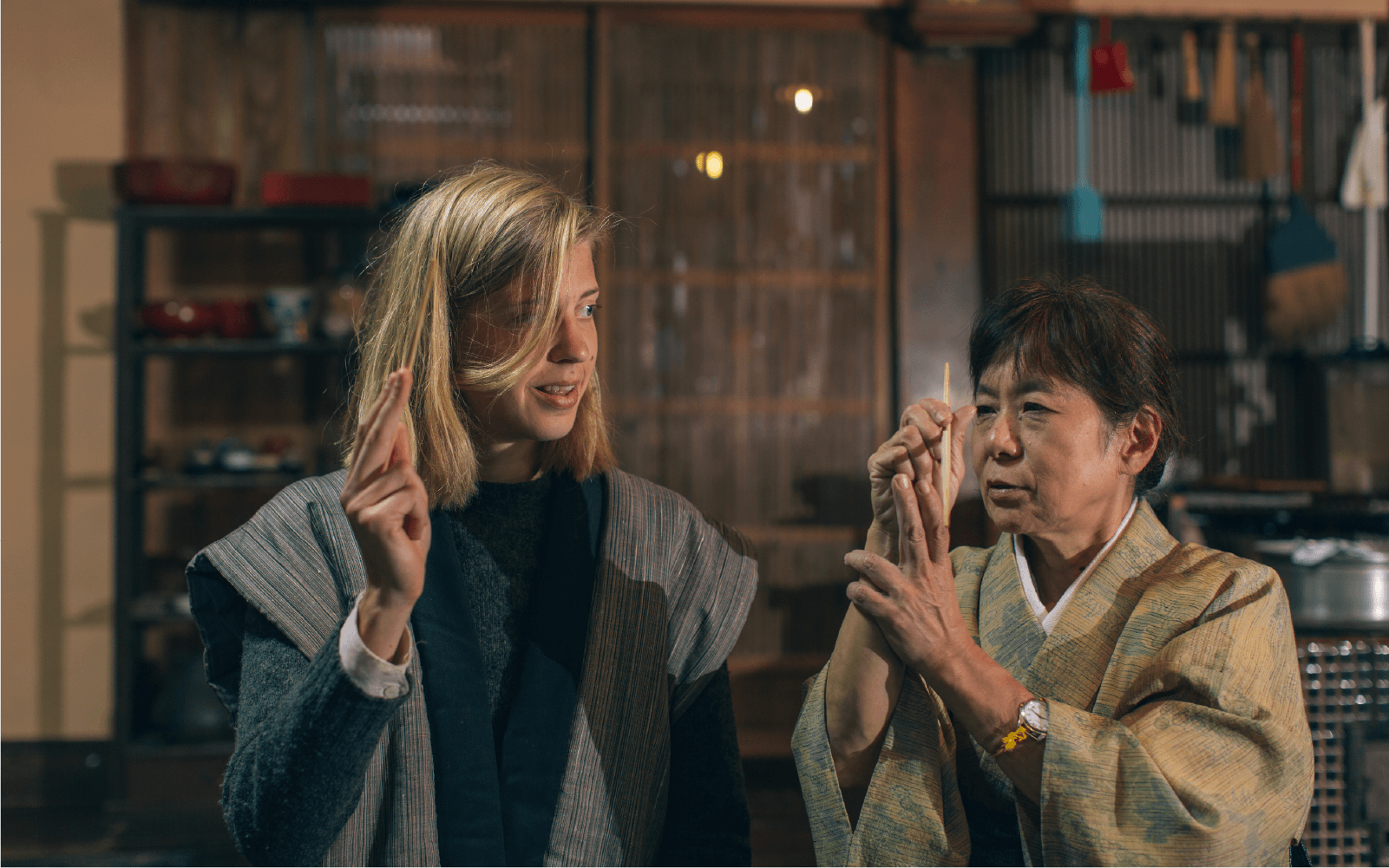
The dinner, which lasted until late, was very fulfilling for Ana.We were told that those who wanted to could make rice cakes for breakfast, and we were feeling reluctant to leave., wishing that the next time we come, we would come with our friends from Takigahara Farm and stay the night.
This trip was more than enough to experience the deep culture and charm of Echizen City, not only for Japanese but also for foreigners.
Yoichi Uchiki / Botanically Photography and Planning
He has 20 years of experience in marketing positions in foreign companies and pharmaceutical trading companies.After a long period of recuperation from a car accident, he decided to place his own activities in contextual design.He moved from Kamakura with the launch of TAKIGAHARA FARM, and now that he has finished his activities as a member of the Regional Development Cooperation Volunteers, he has multiple jobs as a photographer, planner, and herbalist, as well as working on craft soundscapes.He likes to mix people, herbs and all kinds of things.